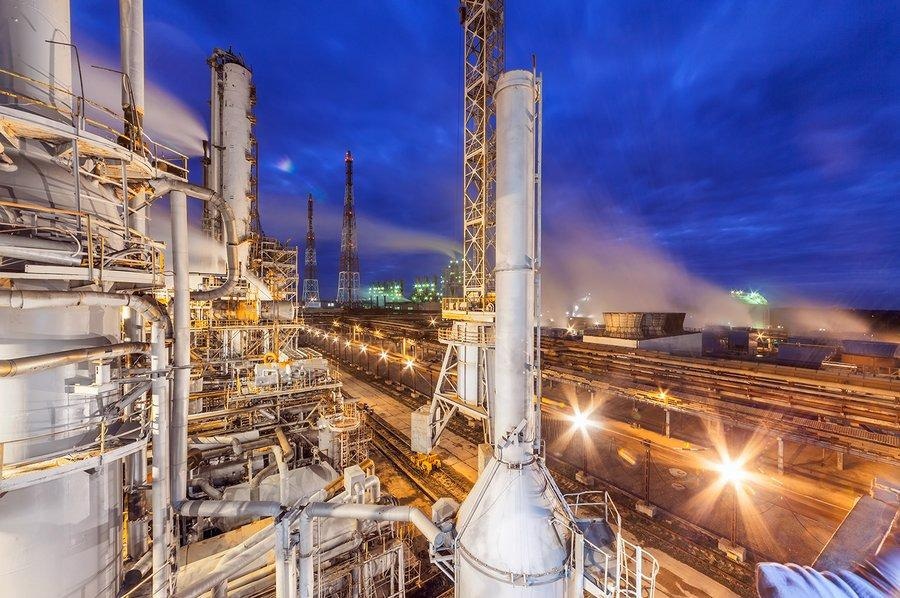Jan 25 2021
Horizon 2020—the EU framework programme for research and innovation— will grant DKK 21 million to a new international collaboration to explore new ways of creating green ammonia. Engineering researchers from Aarhus University are heading the new project.
 Chemical plant for Haber-Bosch production of ammonia and nitrogen fertilization. Image Credit: Istock.
Chemical plant for Haber-Bosch production of ammonia and nitrogen fertilization. Image Credit: Istock.
A grant of about EUR 2.8 million (DKK 21 million) from Horizon 2020—the EU framework programme for research and innovation—will allow a team of researchers from the Department of Biological and Chemical Engineering at Aarhus University to head an international teamwork aiming to design novel technologies to generate green ammonia.
With respect to volume, ammonia is currently one of the 10 most significant chemicals produced around the world. While this substance is mainly used for producing fertilizers for contemporary agriculture, it has recently been seen as an opportunity to decrease carbon footprint for other sectors, for example, the marine industry.
But at present, the production of ammonia is not carbon-free and sustainable. The Haber-Bosch process is the main technique used for producing the yearly 235 million tons of ammonia used globally. This process was invented over a century ago.
The production of ammonia costs 1.4% of the total energy consumption in the world and this process discharges about 450 million tons of carbon dioxide every year—roughly 1% of all anthropogenic emissions of carbon and more than any other industrial production of chemicals.
We want to do something about this, and the project will therefore be looking at the advantages of manufacturing climate-neutral, green ammonia from nitrogen and water in scalable reaction technologies for decentralised, local production. We’re taking our outset for the project in three different new technologies, and one of them is an upgrade of the existing Haber-Bosch reactor.
Emil Drazevic, Expert in Ammonia Technologies and Assistant Professor, Department of Biological and Chemical Engineering, Aarhus University
Drazevic is heading the study, known as ORACLE.
In the latest project, Drazevic and his research team are going to examine and design three new technologies meant for producing green ammonia. These technologies include (A) a Haber-Bosch reactor based on heat from electro-magnetic induction rather than the current heat from incineration, (B) a plasma-assisted electro-catalytic concept, and also (C) an electro-catalytic concept in which a unique catalyst is used to catalyze ammonia from water and nitrogen at room temperatures.
The latter functions as a kind of fuel cell, where water and nitrogen are thrown in at one end and oxygen and ammonia come out of the other. The fuel cell only requires energy in the form of renewable electricity. Prior to this project, we completed a very comprehensive survey of suitable catalysts for the task, and it ended up being a very big eye opener.
Emil Drazevic, Expert in Ammonia Technologies and Assistant Professor, Department of Biological and Chemical Engineering, Aarhus University
Drazevic added, “Our Japanese partners in the ORACLE project bring in expertise in water-oxidation catalysts, and we are now extremely excited to have the right team on board and funds to develop full ammonia fuel cells. I think the final outcome could be a neat and safe technology for producing ammonia at local scale.”
The ORACLE study, called Novel Routes and Catalysts for Synthesis of Ammonia as Alternative Renewable Fuel, includes three European and two Japanese organizations and their industrial associates. It will officially begin on May 1st, 2021.
The study partners are Aarhus University (coordinator), the Dutch Institute for Fundamental Energy Research in the Netherlands, the Jožef Stefan Institute in Slovenia, the Flemish Institute for Technological Research in Belgium, Osaka Research Institute of Industrial Science and Technology, and the National Institute of Advanced Industrial Science and Technology in Japan, and also the companies Casale from Switzerland and C2Cat from The Netherlands.
The new project will run for three years.